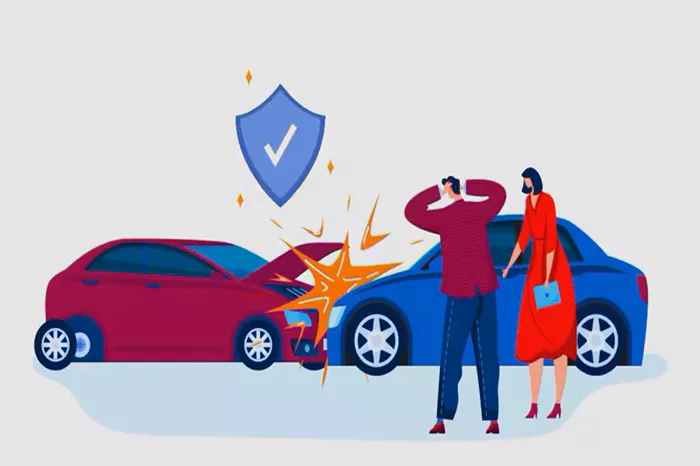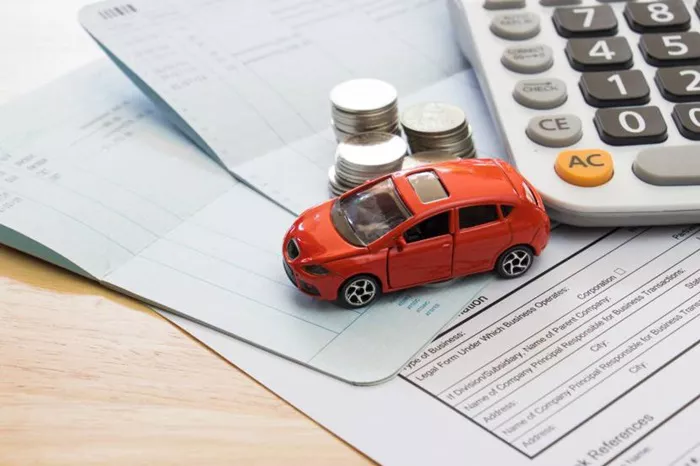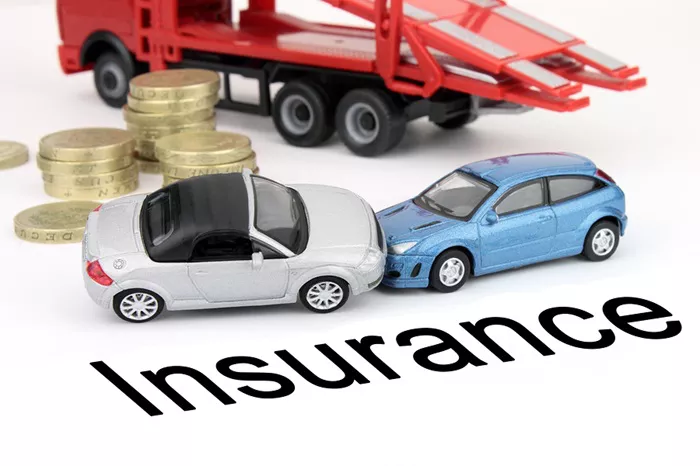In the modern gig economy, ridesharing services like Uber have revolutionized transportation. While the convenience of these services is evident, one aspect that often requires clarification is the insurance coverage involved. This article will delve into how Uber car insurance works, offering a comprehensive overview of the insurance policies that safeguard both drivers and riders. Understanding these nuances is crucial for both parties to ensure they are adequately protected while using Uber services.
1. The Basics of Uber Car Insurance
Uber’s insurance coverage is a crucial element for drivers using the platform. It complements personal car insurance and provides additional protection specific to ridesharing activities. Here’s a detailed breakdown of how Uber’s insurance system operates:
Personal vs. Rideshare Insurance
Personal Insurance
Personal insurance is the standard policy you hold for your vehicle when used for everyday purposes.
It covers accidents, damages, and injuries that occur while driving your vehicle for personal reasons.
Rideshare Insurance
Rideshare insurance kicks in when you use your vehicle for ridesharing activities, such as when you’re logged into the Uber app and accepting or providing rides.
Uber’s insurance is designed to fill the coverage gaps between personal insurance and commercial use.
Coverage Periods
Uber’s insurance policy is structured around different coverage periods, each offering specific protections:
Period 1
Begins when you log into the Uber app and are available to accept ride requests but have not yet been matched with a rider.
Provides liability coverage for damages you may cause to others while waiting for a ride request.
Period 2
Starts when you accept a ride request and lasts until the rider is dropped off.
Includes liability coverage, contingent collision coverage, and comprehensive coverage with a deductible.
Period 3
Covers the time from when the rider is in the vehicle until they are dropped off.
Provides comprehensive coverage, collision coverage, and liability insurance.
2. Types of Coverage Provided by Uber
Uber’s insurance policy includes several types of coverage designed to address different risks associated with driving for the platform. Here’s an in-depth look at the types of insurance Uber offers:
Liability Coverage
Bodily Injury Liability
Covers medical expenses for injuries sustained by others in an accident for which you are found at fault.
Includes legal fees if the injured party decides to sue.
Property Damage Liability
Pays for repairs or replacement of property damaged by your vehicle during an Uber ride.
Ensures that the costs of damaged vehicles, structures, or other property are covered.
Collision Coverage
What It Covers
Helps repair or replace your vehicle if it’s damaged in an accident while you are driving for Uber.
Applies during Periods 2 and 3 of Uber’s coverage.
Deductible
A deductible is required, which is the amount you must pay out-of-pocket before Uber’s insurance covers the remaining costs.
Comprehensive Coverage
Protection Against Non-Co3llision Incidents
Covers damages to your vehicle caused by events such as theft, vandalism, or natural disasters.
Available during Periods 2 and 3, with a deductible that drivers must pay.
Uninsured/Underinsured Motorist Coverage
Uninsured Motorist Coverage
Provides protection if you are involved in an accident with a driver who has no insurance.
Helps cover medical expenses and damages that the uninsured driver cannot pay.
Underinsured Motorist Coverage
Covers the difference if you’re in an accident with a driver whose insurance is not sufficient to cover all damages.
Ensures that you are not left financially burdened due to inadequate coverage from the other driver.
3. The Role of Personal Insurance
While Uber provides substantial insurance coverage, personal car insurance remains essential. Here’s why:
Gaps in Coverage
Coverage Limitations
Uber’s insurance does not cover all possible scenarios, such as when you’re logged into the app but not yet accepting rides.
Your personal insurance policy fills in these gaps, ensuring you have comprehensive protection at all times.
Minimum Coverage Requirements
State Requirements
Personal insurance must meet the minimum coverage requirements set by your state.
Uber’s insurance policy may not fully meet these requirements, necessitating a review of your personal policy to ensure compliance.
Policy Exclusions
Commercial Activity Exclusion
Many personal insurance policies exclude coverage for commercial activities like ridesharing.
You may need a rideshare endorsement or separate policy to ensure full coverage while driving for Uber.
See Also: How Does Agreed Value Car Insurance Work
4. Choosing the Right Insurance
Selecting the right insurance is crucial for Uber drivers. Here’s how to navigate this decision:
Rideshare Endorsement
Understanding Endorsements
Rideshare endorsements are additional coverage options that extend your personal insurance to include ridesharing activities.
These endorsements fill coverage gaps and ensure protection during all periods of driving for Uber.
Comparison Shopping
Finding the Best Policy
Compare different insurance policies to find one that offers comprehensive rideshare coverage.
Look for policies with favorable terms and coverage limits that align with your needs.
Regular Updates
Reviewing Coverage
Insurance needs can change, so regularly review your policy and Uber’s insurance terms.
Make adjustments as needed to ensure that you have adequate coverage for both personal and ridesharing activities.
5. Filing a Claim with Uber Insurance
Understanding the claims process can make a significant difference in how efficiently your issue is resolved:
Reporting an Accident
Timely Reporting
Report any accidents or incidents to Uber and your insurance provider as soon as possible.
Timely reporting ensures that your claim is processed without unnecessary delays.
Documentation
Gathering Evidence
Collect and provide all necessary documentation, including accident reports, photos of damages, and contact information for all parties involved.
Accurate and complete documentation supports your claim and facilitates a smoother process.
Claims Process
Following Procedures
Adhere to Uber’s claims process and cooperate with their insurance team to resolve your claim.
Keep track of all communications and follow up as needed to ensure that your claim is handled efficiently.
Conclusion
In conclusion, understanding how Uber car insurance works is essential for both drivers and passengers to ensure comprehensive protection. Uber provides significant coverage during specific periods, but personal insurance remains a critical component of a complete coverage strategy. By familiarizing yourself with Uber’s insurance policy, the role of personal insurance, and the claims process, you can navigate the complexities of ridesharing insurance more effectively. Regularly reviewing your insurance needs and staying informed about Uber’s coverage terms will help you maintain adequate protection while using rideshare services.
FAQs
1. What happens if I have an accident while waiting for a ride request?
If you have an accident while waiting for a ride request, Uber’s insurance provides limited liability coverage during Period 1. This period covers you from when you are logged into the Uber app and waiting for a ride request until you accept one. However, this coverage is limited and does not include collision or comprehensive coverage for your vehicle. Your personal car insurance will serve as the primary source of coverage in this situation, potentially covering damages and injuries depending on your policy’s terms. It’s important to understand the specifics of your personal insurance to ensure you have adequate protection. If there are significant damages or injuries, you should report the incident to both Uber and your personal insurance provider promptly.
2. Does Uber’s insurance cover my personal belongings?
Uber’s insurance does not extend to cover personal belongings left in your vehicle. The coverage provided by Uber is primarily focused on liability, collision, and comprehensive insurance for the vehicle itself and liability for injuries or damages to others. If you have valuable items in your car, they are not covered by Uber’s insurance policy. To protect personal belongings, you might consider additional coverage or a rider on your personal insurance policy specifically for contents inside your vehicle. It’s important to assess the value of items you carry in your car and decide if supplemental insurance or a personal policy adjustment is necessary. Regularly reviewing your insurance options can help ensure that all aspects of your coverage needs are met.
3. Can I use my personal insurance for ridesharing?
Many personal insurance policies do not cover ridesharing activities due to commercial use exclusions. However, some insurers offer rideshare endorsements that extend your personal insurance coverage to include periods when you are driving for Uber. This endorsement can provide additional coverage during the gaps between personal use and Uber’s insurance coverage. It is crucial to check with your insurance provider to understand if they offer such endorsements and what additional protection they provide. Without a rideshare endorsement, your personal insurance might not cover incidents occurring while you’re using the vehicle for commercial purposes. Ensuring you have the appropriate coverage can prevent potential coverage gaps and financial issues in the event of an accident.
4. What should I do if I have an accident while driving for Uber?
If you are involved in an accident while driving for Uber, the first step is to ensure the safety of all parties involved and call emergency services if needed. Next, report the accident to Uber through the app or their support channels, as well as to your personal insurance provider. Document the scene of the accident thoroughly by taking photos, collecting contact information from other parties, and obtaining a police report if applicable. Uber’s insurance coverage will apply according to the period during which the accident occurred, and you may need to coordinate between Uber’s insurance and your personal insurance for a comprehensive resolution. Keep all records and communications related to the accident for future reference and follow up with both Uber and your insurance provider to ensure your claim is processed efficiently. Timely and accurate reporting can help facilitate a smoother claims process and ensure adequate compensation for damages and injuries.
5. How does Uber’s insurance work if I’m driving my own vehicle for a rideshare service other than Uber?
Uber’s insurance policy specifically covers drivers using the Uber app and does not extend to vehicles used for other rideshare services like Lyft. If you drive for multiple rideshare platforms, you will need to ensure that your insurance coverage extends to all services you use. This may involve having separate policies or endorsements for each rideshare platform. It’s essential to communicate with your insurance provider to understand how your coverage applies across different services and to make any necessary adjustments. Without proper coverage, you may find yourself with inadequate protection if an incident occurs while using a different rideshare app. Regularly reviewing and updating your insurance policies can help manage the complexities of driving for multiple rideshare platforms and ensure comprehensive protection.
[inline_related_posts title=”You Might Be Interested In” title_align=”left” style=”list” number=”6″ align=”none” ids=”3707,3699,3658″ by=”categories” orderby=”rand” order=”DESC” hide_thumb=”no” thumb_right=”no” views=”no” date=”yes” grid_columns=”2″ post_type=”” tax=””]






















